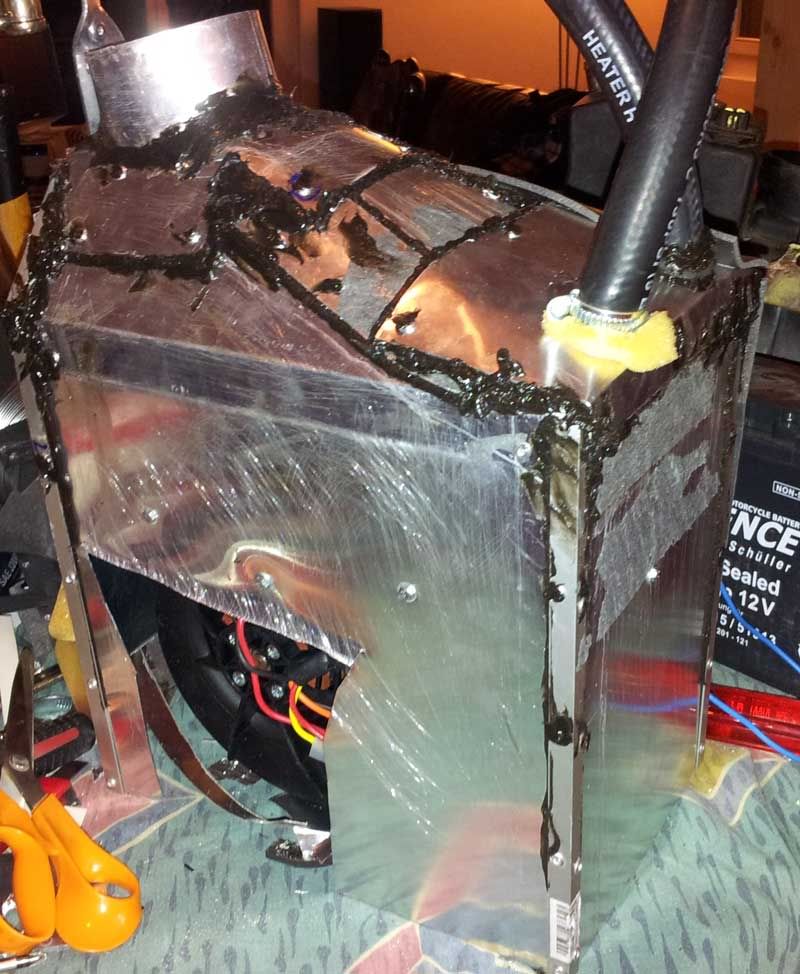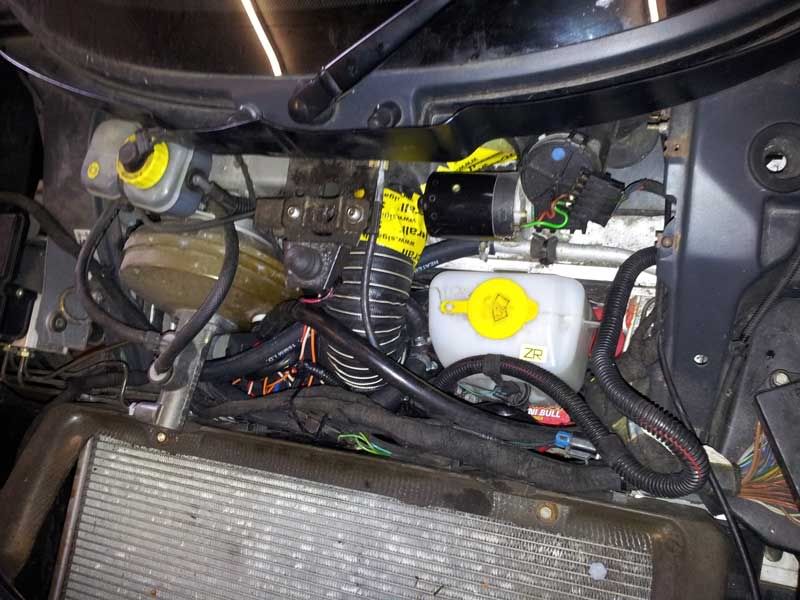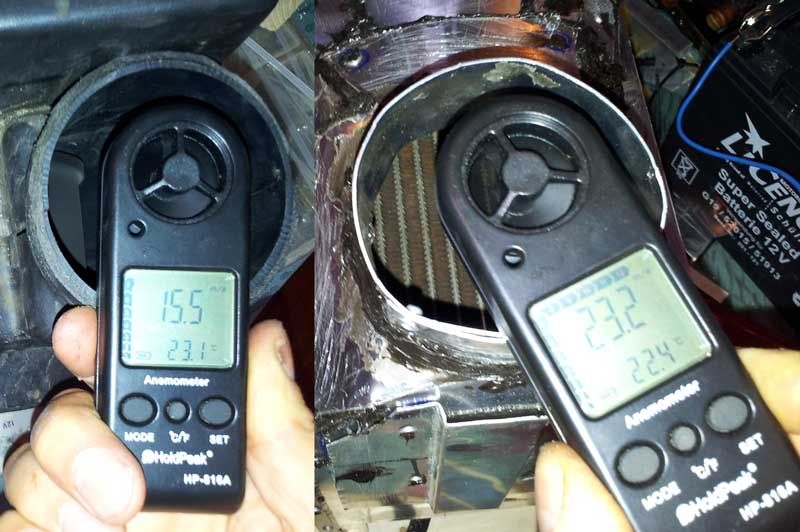Let me make it quite clear, I have no interest in selling mine. I’ll happily share information but I’m not selling kits or anything, so am not in competition with Fezzasus. If I hadn’t gone down this path already I would be buying one from him.
I feel the cold. It’s not about de-misting, it’s about being comfortable in a car I commute in year round in Switzerland. The existing heater is totally inadequate for that. If you want to understand my motivation, this is on my route to work 1 month ago: -

The heaters faults are well known.
1) The coolant makes a long tour round the car in exposed aluminium pipes, loosing temperature.
2) The path of the air is long and convoluted, actually doing a complete 360° turn on its way through the cabin bulkhead.
3) The flap takes up a load of space, leaks cold air and frequently jams, as mine did.
4) The radiator is too small. The VX is a small car, but it has lots of exposed aluminium which conducts heat some 5 times better than steel. The cabin has many leaks. The car needs a lot of heat.
5) The fan is inadequate. As well as being too small it sucks warm less dense air from the radiator, instead of blowing cold dense air through it.
6) The air then leaves the heater through some ducting that is long (for a high surface area), corrugated (for a high surface area) and is made from aluminium, which has high thermal conductivity. Additionally, it falls apart if you try and refit it.
So I bought the biggest fan I could find, the 580 cfm unit from T7Design. I bought the biggest radiator I could fit, one from a Honda Prelude – which by volume at least is 50% bigger (I don’t know about fin area). I put the fan below the rad and the exit very near the cabin bulkhead entry. Oh, I constructed it from riveted aluminium, filling the gaps with silicon. Before I installed I covered the outside with insulating tape to try and keep some heat in. Here it is, a bit of a dogs breakfast.

This is the heater installed: -

The heater is actually much narrower than the existing one so is easy to fit, although you do have to remove the bonnet catch. Unfortunately, it’s a little too long, so getting the battery is a squeeze. I think I can trim some insulation off and make this easier.
I intended to use a London taxi water control valve but this proved too difficult to fit in the space. I wonder if this will be a problem? There’s no ram air effect now, so when you turn off the fan there’s no heat. No one uses the fan for ventilation, you take the roof off or wind the windows down. I’ll see if it’s a problem, but I don’t think it will be.
Ok, so, some numbers. Firstly, a disclaimer. I’m not a mathematician, or an engineer. I may have got both disciplines wrong. Corrections gladly received.
The fan uses 40% more electricity, but blows 50% more air.

Or does it?
It’s the air mass we’re interested in. I measured the original heater at 40°c at the dash with an outside temperature of -3°c. The mass of air at 40°c is 1.13 kg per m3. But the new heater is pumping it at ambient temperature, -3°c in this case, where the mass is 1.29 kg per m3. So that should be a 71% improvement in air flow. Given the 8cm diameter of the heater exit the old heater was pumping 5.28kg of air per minute and the new one 9.04 for the same ambiant temperatures.
Maybe.
I recorded a temperature raise of 43 Kelvin for the original and 53 Kelvin for the new. I make that as 3.82kw for the original heater and 8.07kw for the new one, a 211% improvement.
But remember, that was measuring the air speed at the heater outlet and with the rad disconnected. In reality it has to pump the heated air through the bulkhead orifice. I measured only a 32% improvement in air flow at the dash outlet which combined with the increase in temperature gave only a 79% improvement in heat. I took these measurements when the temperature was -3°c for the original heater and +6°c for the new. I suspect that the improvement would be greater if it was -3°c in both cases as it’s the differential between the coolant and the outside air that makes a big difference.
If I’d increased the BHP of my Turbo by the same amount it would be 358bhp – making it a stage V probably, whatever that means.
It’s actually as I suspected, that however big a fan you install you’ll always be restricted by the 8cm diameter of the ducting. I did examine putting a supplementary heater in the cabin but there just isn’t the room.
So what impact has this made on the car?
It’s much more useable in cold weather. I have been introduced to the concept of turning the fan down and even off. I suspect that it’s still not adequate for extreme cold of -14°c, but even my Range Rover, which has a good heater, takes a while to heat up with that temperature.
Can you drive with the top off in the cold? Well, I went out with the hard top off last night in 6°c and it was ok. I was wearing a T shirt and then one of those very thick lumberjack shirts and a hat. My feet were ok, and with a pair of gloves it would be fine.
Incidentally, I bought a heated seat cover and this is brilliant in winter. I saw the guide on inserting heating elements into the existing seats, but I think the covers are a better solution as you can remove them when not needed.
One other thing. It’s difficult to take your coat off when sitting in the VX, and when you do there’s no where to hang it!
All in all, if you use the car in winter, buy Fessasus's heater.





















